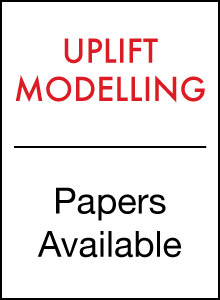
The Brutal Facts
While targeting using conventional response modelling is generally much more effective than either a "gut-feel" approach or blanket contact, there are some unpalatable and under-appreciated facts.
|
Stochastic Solutions staff have deep experience of both the design of direct marketing programmes and their post-campaign analysis. We can use this expertise to audit and verify the effectiveness of current practices, and to work with companies to help ensure the best planning of future activity.
In addition to this, we have deep expertise in a scientific approach to taking marketing to the next stage, using uplift modelling to optimize the targeting of direct marketing and customer management activity to maximize the net (or incremental) impact of campaigns.
Of course, uplift modelling is no panacea, and will not always lead to better results. In some situations, the uplift approach adds nothing because an uplift model ends up targeting the same people as a conventional approach. This situation pertains when incremental impact and purchase rates are strongly correlated. In other cases, typically when control groups are very small, there is too much noise in the data for an uplift approach to be effective at all, though remarkable strides have been made in extracting meaningful patterns even with unreasonably small control groups.
Frequently, however, the difference and uplift approach makes is breath-taking. We have used the uplift approach to double the profitability of already highly profitable campaigns; in other cases, we have taken campaigns that were heavily loss-making, sometimes because of the sort of negative impacts discussed above, and found segments of customers who can be profitably targeted.
Whatever stage of sophistication your business is at with targeting or other customer decisioning, Stochastic Solutions can help you to take it to the next level. If there is potential to benefit from more sophisticated use of control groups and incremental modelling, we can help you chart a path to gaining it. If there's not, we can at least ensure that you have in place the tools and methods to allow you to detect that potential if and when it arises.



